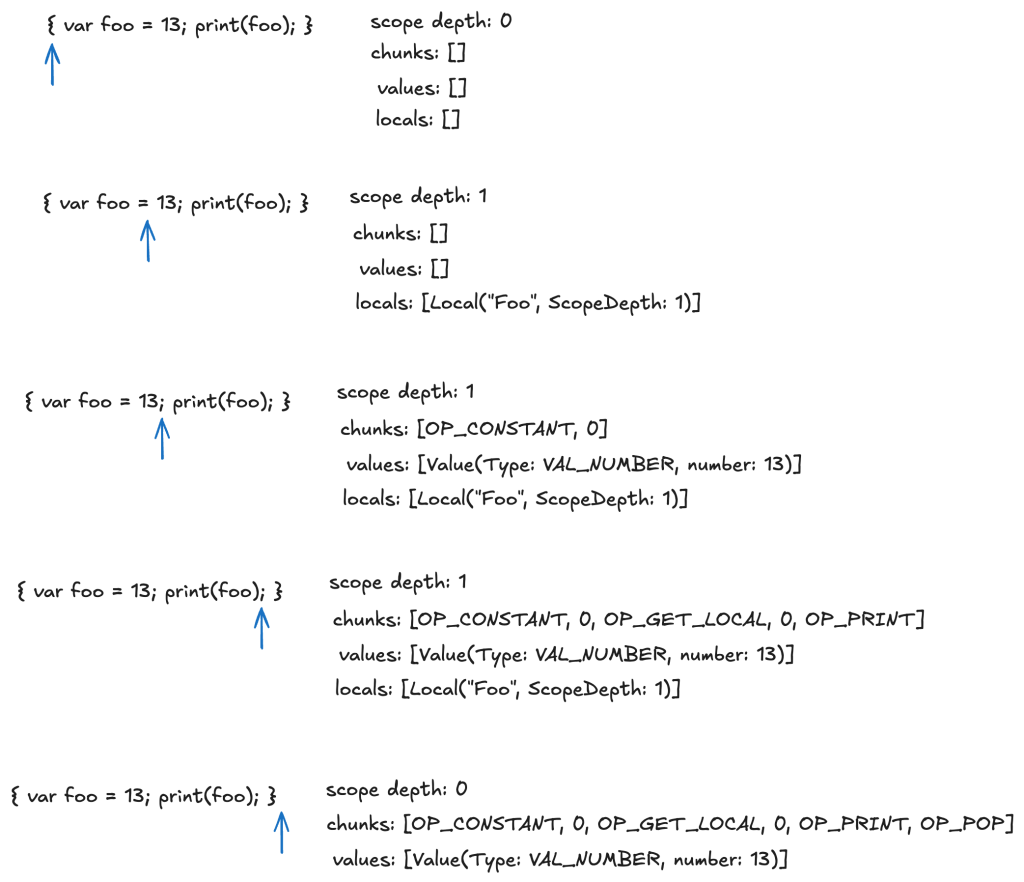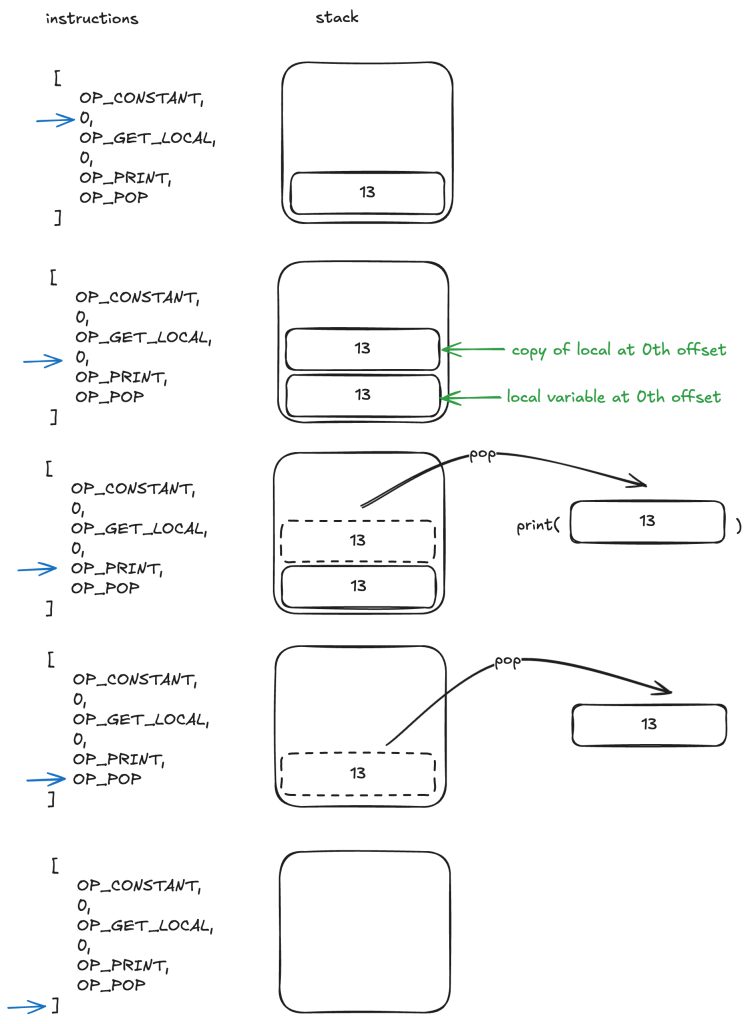the purpose of closure objects is to hold references to closed over variables. but how does it find those variables if they may or may not be on the stack? we cant rely on the exact mechanism of local resolution because locals are always guaranteed to be on the stack during a functions execution!
Since local variables are lexically scoped in Lox, we have enough knowledge at compile time to resolve which surrounding local variables a function accesses and where those locals are declared. That, in turn, means we know how many upvalues a closure needs, which variables they capture, and which stack slots contain those variables in the declaring function’s stack window.
the new abstraction introduced here is something called an upvalue. an upvalue is what the compiler sees as a closed over variable. what bob is saying above is that we can figure out exactly what our upvalues are at compile time and make sure that at runtime those variables are accessible on the vm stack
exactly how that is done is a bit more complicated and its not immediately clear when reading the section on upvalues how the implementation supports the eventual runtime variable capturing behavior. in a way he’s basically saying, here’s how we want to compile upvalues – trust me we’ll need this information at runtime when we create closures.
one of the first questions i had reading this section was, how does the vm at runtime, given these upvalue indices, differentiate between locals and upvalues? we know that locals get pushed onto the vm stack when they’re referenced by other expressions and the OP_RESOLVE_LOCAL calls index into the relative position of the stack inside call frames. but what about upvalues? not all upvalues are necessarily on the stack.
this wasn’t answered until later when he added an array of pointers to upvalues (ObjUpvalue** upvalues;) to closure objects. so these indices we’re building at compile time are going to index into that array in our closures. since these are pointers, they could be pointing at either captured that are still on the stack or maybe ones that bob eventually moves onto the heap.

